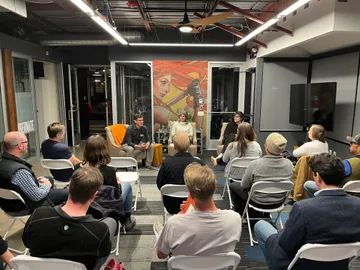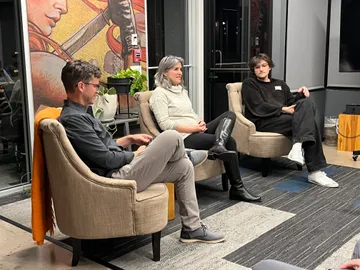Musings on the ROI of Product Design

It's not easy to prove the value of product design, but it can drive big wins within your organization. Three experts share how to do it.

Viget hosted the Bolder Design meetup last week, where we hosted a panel centered on the ROI of Product Design. Panelists included Kevin Menzie, Director of Design at MSCI Inc., Haroon Matties, Senior Product Designer at Viget and Nayda Sustache, Senior User Research Consultant at UserTesting. We dove into how design teams can work smarter and communicate their impact to their business counterparts more effectively.
Here are four takeaways that stood out to me —
1. Know Your Stakeholders & Speak Their Language
Good design is all about communicating and storytelling, right? That applies to the way we communicate with our stakeholders as well — it’s important to tailor your communication to what matters most to them. Kevin stressed the importance of identifying which metrics truly resonate with business leaders. Haroon shared his practice of reformatting his work to make design reviews more relevant to different stakeholders.
“I like to ask stakeholders, ‘What metric keeps you up at night?’ ” - Kevin
“Understand the party you’re talking to, and speak their language.” - Haroon
Nadya added that involving the right people early — especially when deciding on which metrics to track over time — always fosters alignment.
“It’s important to get the right people in the room to focus and prioritize what you want to measure.” - Nadya
2. Balance Business Metrics with Project Impact
Metrics matter, and when available at scale, they can help demonstrate product design’s impact on the business. However, not all design outcomes translate neatly into direct financial returns for the business, and it can be tricky to prove that relationship. Panelists discussed different tactics they've practiced.
Nadya gave great examples of metrics, like CSAT and SUS, that help quantify the user experience. She also highlighted the importance of showing how specific design projects drive financial returns in less obvious ways.
“Think about questions like, ‘How do we help the company save money?’ or ‘How do we help them make money?’” - Nadya
"ROI’s a pretty messy topic; it’s not universal. Rather, I focus on project-based value and have found success in that.” - Haroon
Haroon spoke to his own personal successes in highlighting a specific design project and its impact on the business, in addition to more traditional metrics. In my own projects, this has looked like gathering stakeholder inputs, collecting narratives on how design influenced the project, or seeking or seeking other types of numbers (like time saved) that still highlight design’s impact. This approach is also great for those that don’t have access to quality data at scale yet, but need to stay data-informed.

3. Design is Art and Experimentation
While design often feels like an art form, it’s equally about experimentation. By treating design as a process of iterative testing and learning, we can make our work more transparent and accessible to stakeholders.
Haroon shared a simple yet effective habit: whenever he presents a Figma file, he includes a clear goal-setting section to review with the team beforehand. This could include a hypothesis for the design’s success, the metrics it could influence, and the user research backing his decisions.
"It’s important to remind my stakeholders why we’re here [reviewing designs]...I set up my design files with a north-star metric that we’re chasing, my hypothesis for how this design could influence that, key metrics that may also be impacted and the research that supports this.” - Haroon
Auditing past design projects—what worked, what didn’t—can be invaluable too. It helps product teams communicate what future design successes could look like, both internally and with business partners, and show the overall business that design isn’t some magical black box—it’s a thoughtful, collaborative process.
4. Make Best Practices the Default
Do stakeholders really need a crash course on every aspect of our design processes? Not necessarily. Instead, weave best practices directly into your workflow early on. Haroon shared how he approaches accessibility this way by designing inclusively from the ground up. Similarly, the group shared how design systems can boost a team’s efficiency without needing to be a topic of endless stakeholder debates.
The design world has certainly had its ups and downs lately. As our practice continues to evolve, it’s essential to learn from one another. This meetup was a great reminder for me of how much we can gain by sharing strategies and lessons learned.
Here’s to more conversations, collaboration, and creativity in the months ahead!
